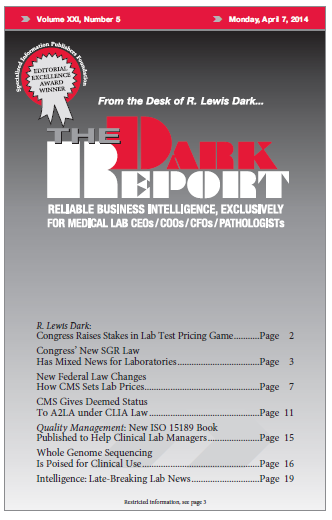CEO SUMMARY: Quietly published in the March 25 issue of the Federal Register was a notice that CMS had granted deeming authority for CLIA to the American Association for Laboratory Accreditation (A2LA). This action gives laboratories in the United States a new choice to meet the accreditation requirements of CLIA. Founded in 1978, A2LA is …
CMS Gives Deemed Status to A2LA under CLIA Law Read More »
To access this post, you must purchase The Dark Report.


